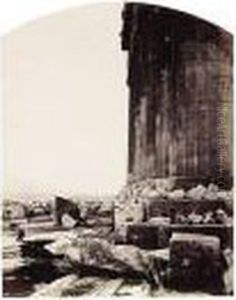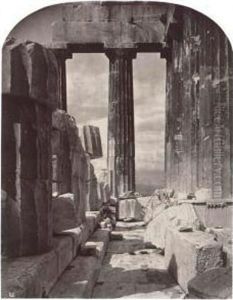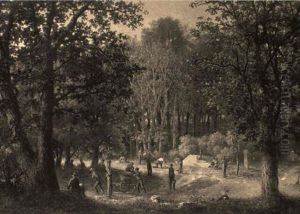William James Stillman Paintings
William James Stillman was a man of many talents and interests, whose life journey encompassed roles as an artist, journalist, diplomat, and photographer. Born on June 1, 1828, in Schenectady, New York, Stillman was raised in a period of American history where the arts and sciences were flourishing, and he took full advantage of this environment to develop a diverse set of skills and interests. He attended Union College in Schenectady, where he was influenced by the transcendentalist movement and developed a keen interest in art.
After his college years, Stillman chose to pursue a career in painting and became associated with the Hudson River School, a group of landscape painters who were inspired by romanticism and sought to capture the sublime beauty of the American landscape. Stillman's early works reflect this influence, but his artistic journey was marked by evolution and experimentation. He traveled extensively in Europe, where he was exposed to different artistic movements and philosophies, which broadened his aesthetic horizons and influenced his subsequent work.
In addition to his artistic career, Stillman was deeply involved in journalism and politics. He founded and edited The Crayon, the first American journal devoted to the visual arts, which served as a platform for his ideas on art, culture, and society. His interest in politics and international affairs led him to serve as a correspondent for The Times of London during the American Civil War and later as the United States consul in Crete during the Cretan insurrection against Ottoman rule. These experiences enriched Stillman's worldview and were reflected in his writings and photographs.
Photography became a significant part of Stillman's artistic output in the later years of his life. His photographs of the Acropolis in Athens, Crete, and other locations are notable for their composition and for their historical value as some of the earliest photographic records of these sites. Stillman's work in this medium has been recognized for its contribution to the field of archaeological and travel photography.
William James Stillman passed away on July 6, 1901, in Surrey, England. His life and work exemplify the interdisciplinary approach of a Renaissance man, deeply engaged with the world through art, journalism, diplomacy, and photography. Stillman's legacy is preserved in his diverse body of work, which continues to be studied and appreciated for its artistic and historical significance.


